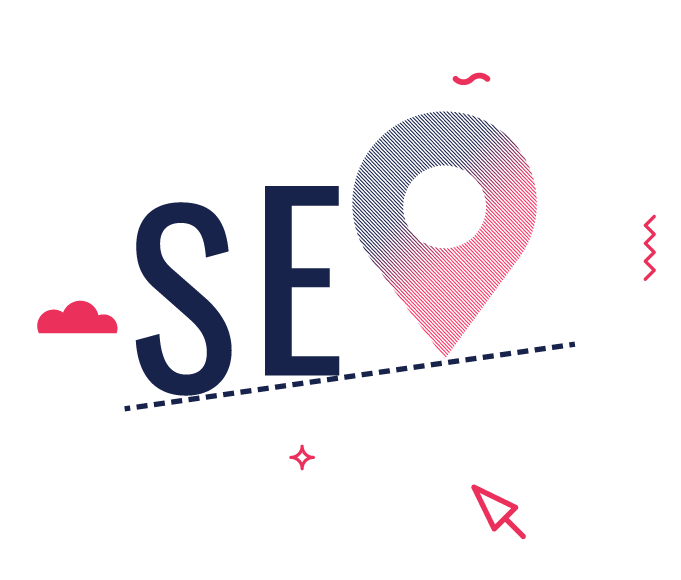
Chapter 1: The Basics of SEO
Welcome to the exciting realm of SEO! In this chapter of our comprehensive guide, we’ll equip you with the knowledge and strategies to excel in search engine optimization. From the importance of investing in SEO and its key areas to ensure success to learning how to perfect URL structures and forecasting, this chapter will reveal everything you need to know to understand the basics of SEO. So get ready to conquer the digital landscape and achieve exceptional results!
Why Invest in SEO?

Although the seemingly prolonged timeline of SEO strategies may appear unattractive at first, it’s vital to recognise that treating your SEO services as an investment rather than an expense can make all the difference. Similar to the world of stock investments, where patience and continuous monitoring often yield remarkable outcomes, SEO follows a similar pattern. So, if you are committed and remain steadfast in executing your SEO strategy over an extended period, you can witness a flourishing and profitable margin.
TOP TIP: A good SEO strategy is like a good asset. For example, property assets. You buy a piece of land that appreciates over time, compounding in value. No one will ever buy a piece of land and expect appreciation in one month. Those who gain property assets will hold onto them for a certain period in which their value has increased to create a profit. SEO is exactly the same. Without a proper understanding of its method and timeframes, you’ll never be able to see the increased value of your website and the overall return from your investment.

For this reason, SEO should never become a viable option for those who want results asap. However, for established businesses that don’t mind a slow start, SEO can increase brand awareness and improve paid media returns, all while creating a slow-burning return investment that will continue for months and months to come.
This long-term-based channel, unlike paid media, will slowly gain velocity over time. This means that when you feel it’s time to stop all SEO work, you’ll still be able to see a return on your investment for months after this initial stop date. This unique benefit balances SEO’s need for constant maintenance and work and portrays a clear reason why many established businesses use SEO to boost their brand above the rest.
TOP TIP: When you’re driving a car and hit the brakes, you’ll immediately stop- this represents google ads. If, while driving, you take your foot off the accelerator, you’ll still have momentum and will keep slowly moving forward, even though your foot is technically off the accelerator- this represents SEO.

In modern markets, website traffic derived from organic search accounts for just over half of all traffic at 51%. With an increasing number of retailers seeing SEO as the most effective way of connecting with new customers, it’s clear to see why SEO is becoming a worthwhile investment.
Most businesses that choose to employ a range of SEO strategies will rely on this organic traffic method to drive 40% of their revenue. Whether a business is aiming to increase its brand awareness or revenue, the exact strategy you use to employ will determine the exact results seen. SEO has shown a long list of benefits, some include;
- An average close rate of 6%, which, compared to traditional marketing methods, is eight times higher.
- Generating more than 1000% traffic rate than social media.
At the end of the day, it’s essential to understand SEO as a long-term investment that will take time and constant work in order to achieve unparalleled results. Before diving straight into SEO, you should consider your business and its operation to understand the compatibility a potential SEO strategy will create for your business.
Organic vs Ads position on search engine results page (SERP)

Google, the ever-evolving intelligence hub, keeps us on our toes with its relentless algorithm updates and operational shifts. It’s like witnessing a daily battle of wits between authenticity and profit, as Google strives to distinguish between the two. This constant struggle makes it increasingly challenging to differentiate between organic search results and paid ads. However, for now, there’s a simple trick to discerning the two: sponsored ads will flaunt their status with a sponsor or ad text, while organic results, donning a blue header and black meta description, patiently await their turn after the map listings. Stay sharp, my friends, as the Google landscape continues to surprise us with its quest for balance.
With 40,000 Google searches every second, choosing between these two search result options will impact your immediate goal. While each is both important in its own right, they can create different results and customer impacts, affecting their business and journey towards specific goals. According to recent research, organic search results have a significantly higher click-through rate than paid search ads. While the average click-through-rate sits at 28.5% for first organic results, the average rate for paid search sits at around 2%, a shocking difference.
Where organic search results are higher in value and appear in all search pages, albeit lower down, ads will usually appear on pages with high buyer intent. For example, if you search for Nike Crossfit shoes, Google’s algorithm and search engine will understand that you’re most likely going to buy the product being searched for and will, therefore, change the search results to reflect that. Displaying more ads pushes organic results further down the list and creates more revenue for Google.

So what does this mean for organic search? At the moment, with Google’s focus and priority on revenue-boosting ads, organic search still prevails. This is especially true for long-tail term phrases, which are more often than not informative in nature or fill a search gap that might not necessarily have Google ads available.
In the thrilling world of online search, customers possess a remarkable knack for distinguishing between ads and organic search results, even if the technical nuances elude them. What’s truly captivating is the way users instinctively scroll past those flashy ads, drawn to the alluring aura of trust and authenticity emanating from organic search listings. While anyone can splurge on ad space to seize the spotlight, the real quest lies in conquering the coveted realm of organic search. Here, it’s not just about deep pockets; it’s about playing a strategic game that melds relevance, trust, and an unwavering understanding of user desires. In this exhilarating battle for search supremacy, Google carefully crafts result pages that mirror the exact yearnings of its users, leaving no room for financial shortcuts alone. Get ready to unleash your website’s true potential by mastering the art of organic search and captivating customers with a winning blend of relevance and user-centricity.
How does SEO positively impact other channels?

Everyone in e-commerce and retail markets will understand that the customer journey has evolved to combine multiple touchpoints; these touchpoints depend on the product’s or service’s value. With the turnaround time from the customer’s first engagement with the brand to the time they actually convert and become a buyer will differ, SEO has become a critical supporting role in the overall customer journey. Where other media channels like google ads and Instagram align with what you’re trying to promote, SEO will use these different channels to boost authority and conversion. How does SEO provide support for other channels? Say, for example, if a paid ad talks about Nike shoes and the client has a recently optimised page on their website promoting Nike shoes, your ad conversion will grow significantly higher and with more enhanced features and returns because google will be able to crawl this optimised page and gain more authority from your website. This is predominantly due to the overlap in keywords used on this optimised page and the paid ad and the research done by the paid media and SEO teams, giving a better quality score as well.
All SEOs understand the role of new and returning customers in the context of a client’s conversion rate. New visitors to your website will always online contribute a small percentage of your conversion. However, your return customers will drive these conversion rates and purchase from your website. Working side by side with paid and SEM teams to increase organic traffic is not only advantageous to your conversion rates but will increase success in remarketing campaigns to retarget audiences that have already come through organic channels. Therefore providing a lot of indirect value to fuel your sales funnel.

While it might not seem like the channel that creates the most sales, SEO will always be a consideration point in a user journey from when a potential customer comes in at the top of the funnel at a research stage all the way down to the actual purchase.
Some other positive impacts SEO can bring to your campaign and business include the following;
- Improving the overall quality score for PPC campaigns to reduce CPC
- Improving brand authority and awareness through PR link acquisition. Which can lead towards increased direct traffic to your website.
- Leveraging organically trending topics to increase brand awareness on social media.
- Providing more in-depth insight into audience intent for the rest of your teams.
- Improving site speed optimisation to enhance the overall user experience and conversion rate on all other channels.
- Local SEO optimisation for brick-and-mortar businesses to gain better reach on Google/Apple maps.
- Organic audiences being retargeted via Google remarketing ads.
SEO Challenges

As SEO emerges as a powerhouse strategy for businesses, the cost factor often adds a thrilling twist to the journey. It’s true that SEO demands relentless effort, constant maintenance, and seamless collaboration among diverse teams and stakeholders, making it an investment that surpasses the expenses of paid and other channels. If you’re seeking life-changing results and remarkable conversion rates, a sustainable commitment to SEO becomes the key. After all, in the realm of SEO, you truly get what you pay for. It’s unrealistic to expect a meagre investment of $500 to yield thousands in return. To unlock genuine revenue and witness the transformational power of SEO, a respectable sum must be dedicated, enabling the completion of an extensive list of tasks and fostering fruitful collaborations. So, embrace the thrill of the journey and be ready to seize the rewards that await with a dedicated investment in SEO.
Often grouped together when talking about various channels, people will often assume that because SEO is grouped with paid and social channels, it will return at a similar rate as paid media will (and often in the same timeframe). Because of this lack of differentiation, clients usually expect the same results as other faster channels. This will be especially true for clients that put all their eggs in one basket. If clients have put all their media and marketing budget into SEO, it’s important to remind them about the turnaround time for results to remove any antsy feelings these clients may have. As SEO has a compounding effect and takes time to kick into action, clients expecting results at a month’s end may create problems with the relationship of their SEO team. SEO may not even be the right choice for certain small businesses and startups due to its compounding nature – which is another challenge to identify with potential clients beforehand.

Some of the other most prominent challenges that SEO incur or creates can include;
- Constantly having to readjust and change SEO strategy implementation. As Google’s algorithm is always changing, there’s always something to change in your website to work these new requirements to your benefit.
- SEO can’t create demand; it can only exploit what is currently available. If you’re launching a new product or service that has yet to be heard of, you can’t expect related keywords to succeed in your SEO campaign. This brand awareness will need to be created through social channels before you can start work on the SEO side of things.
- Your business’s CMS or its quality can impact SEO results. Using an old or complicated CMS platform can create more work and challenges for technical SEO and other elements.
- Once you’ve reached top page rankings, you’re not guaranteed to stay there. Unless you’re constantly working on your SEO implementation and updating your website when Google’s algorithm changes, you can potentially drop in rankings and start losing clicks. You should never approach SEO as a start-stop method; you must be in all or nothing. It’s important to remember that just because you’ve stopped SEO work doesn’t mean that your competitors will, leaving a gap for them to take charge and take the lead.
- Creating copy that employs SEO keywords purely to rank isn’t always going to produce your intended results. SEO-focused copy needs to create value for the reader to yield authentic engagement. This is why most SEO specialists aim to create customised copy that aligns with the brand’s mission, tone and range of products and services; this means that AI copy (while still useful) will never be able to yield search results that customised human-centred copy can.
SEO Misconceptions

One primary misconception that everyone first interested in SEO assumes is that anyone can do SEO, possibly even for free, and yield great results. In reality, SEO takes a lot of time, money and effort to learn in order to provide high-quality recommendations. This is all on top of the weekly research needed to understand all of Google’s implemented changes.
Among this prevailing assumption, there is also the misconception that all SEO specialists are alike in personality, which like in any industry, is not true. Each individual’s experience and career journey will differ; not all agency SEOs will offer the same solutions and results as one another, and the results will reflect this. It’s also assumed that opting for an off-shore SEO specialist will again yield the same results as an on-site SEO from an agency. While cheap services are more convenient for businesses, they will never be able to reveal the same results in quality and understanding as an SEO specialist from an agency in your country.
Most businesses and individuals new to SEO will often assume that SEO specialists have a secret buy-in to google that will manipulate their rankings faster. It’s important to understand that no SEO specialist has this relationship with a Google rep. While some SEO specialists in the community will use google software to make it appear as though their search rankings have automatically changed the rank of their websites, these can’t always be trusted. Ranking takes time, effort, investment and many resources. It’s not the number of keywords that rank at the top of Google but the value behind the keyword and the value brought to your business by ranking number one in a specific keyword.
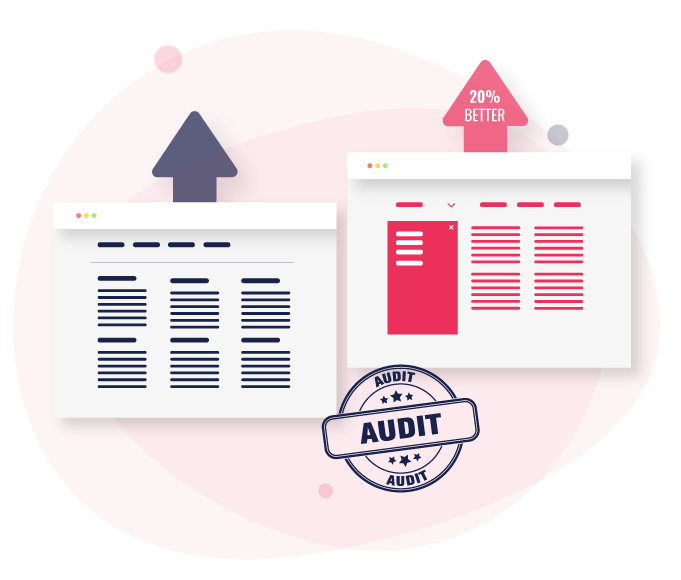
Some other common misconceptions held about SEO include:
- SEO is all about targeting and ranking specific keywords. While this sounds accurate, SEO is focused on improving the website’s overall experience based on quality, technical implementations and the building of authority on your site.
- Backlinks don’t matter. As mentioned above, building authority is one of the most crucial elements of SEO. Backlinks and PR links are the sole builders of this authority with both Google and your customers. While it might not be a critical part of the process as a few years ago, it still has a lot of significance for those wanting to yield greater conversion.
- SEO is a one-time-only thing (or you just need to do SEO for a few months). SEO is an ongoing process. Just like the accelerator analogy used earlier ,if you stop actively investing time and money in SEO, you will NOT instantly lose traffic. However, over a period of time, you’ll notice that the momentum will get slower as other competitors are still optimising their websites which will eventually lead them to get ahead of you in organic rankings.
- Using SEO plugins like Yoast or RankMath are sufficient. Many people think if you have a green tick on your plugin, your website is optimised – which isn’t true. Your website will always need more verification than through a single tool to ensure that what you’re implementing has been done correctly and will work in tandem with your bigger SEO strategy.
- SEO is all about optimising for the search engines. Search engines are only a means to an end. The true ending to your SEO implementation is always to reach your target audience.
- 3rd Party SEO tools are 100% accurate. SEMRUSH and AHREFS are great tools that give you an overall look at what’s happening and a decent marketing picture, but they aren’t 100% accurate. The only tools in the world that are 100% are tools you own for your websites, like GA (google analytics) and GSC (Google Search Console).
How long does SEO take to work?

SEO may not be a race, but if it were, it would be more of a marathon than a sprint. As we’ve already established, SEO works best in the long term, so it comes hand-in-hand that you could be waiting longer than other channels to see results. More often than not, this timeframe will differ from industry to industry and in niche areas. You could also see an impact in this timeframe depending on the competition of your industry or niche and your website’s speed and technical implementation. This latter point is essential as the timeframe that you can implement any changes on your website will affect how quickly or slowly Google can crawl your website and improve its performance.
You’ll often find that smaller websites will need a more aggressive content approach when it comes to SEO strategies, while larger e-commerce websites will rely on technical SEO changes. This can include auditing hundreds of pages to ensure there are no technical SEO issues like ranking or duplication that can again hinder the length your SEO strategy will take. If the health of your website isn’t up to scratch, you’re practically adding an extra step before any performance implementation can be added to your website. This means if there are too many tech issues or your website is too condensed, the level of performance you can gain will be limited, as will the effect of any SEO implementation.

While you can’t reasonably predict how long an SEO strategy will take to work, as a general rule of thumb, you’ll most likely see results anywhere from 6 to 12 months. If your SEO strategy relies on an aggressive technical plan, you can see improvement and results from as early as three and a half to 4 months depending on the industry and niche of the brand. Ultimately, this timeframe will depend on the level of collaboration between the SEO team and client and their turnaround time for implementing suggested changes. Your budget and level of investment will also factor into this time frame equation. Because of the high level of collaboration between technical SEO and content, you need many resources to implement the best practices to reach your performance goals cohesively. For this reason, if you’ve only invested from $1,500 to $2,000, your budget will be limited and most likely stretched as thin as possible across the months. If you want your website to succeed, investing more money towards your SEO strategies will allow for easier collaboration and work, yielding more performance-boosting changes.
White Hat vs Grey Hat vs Black Hat SEO

SEO practitioners don distinctive hats, each representing a different approach, creating a vibrant tapestry of strategies. These hats, colour-coded to reflect their distinct methodologies, serve as badges of honour as SEOs embark on their work. Each SEO will wear one of these hats and adopt the same work method listed below.
White Hat
White hat SEOs are like the good guys of the internet, using ethical tactics to help businesses improve their search engine rankings and achieve online success without resorting to sometimes blurry black hat methods. They’ll always follow the recommendations Google outlines as a dependable source of truth that shouldn’t be bent in any way. While this is a good perspective that allows the implementation of great content strategies and technical improvements, most SEOs will know that only some things Google says are trustworthy, especially with its constantly changing guidelines and algorithms.
Grey Hat
Grey hat SEO is like the cheeky middle child of the SEO world, often straddling the line between ethical and unethical tactics to achieve faster results and higher rankings. Most grey hats will have robust strategy plans, good keyword research outcomes to set the tone for growth and good technical SEO. However, they might include a few techniques that edge the line into black hat practices, like link-building manipulation. Most SEOs will fall between white and grey hats, following a mixture of processes from both hats.

Whereas white hats take Google’s word as truth, grey hats will take it with a grain of salt. For example, in the past, Google has said that keyword density is irrelevant, but through regular SEO practices, SEOs will understand that keyword density is important to a certain extent; this isn’t true for exact keyword matches. A level of keyword density is needed, so Google understands what the page is about. In situations like the above, grey hat SEOs will approach their strategies as a mixture of their own research and experimentation to decide the best outcome for their client.
Black Hat
Black hat SEOs are like the black sheep of the SEO world. As creative rebels of the online universe, black hats will always push the boundaries and think outside the box to achieve higher rankings and reach new heights, always reaching short-term gains. They’ll be the ones to go back and manipulate all of the fundamental practices white hats will follow to rank quickly and monetise off that. Even today, you’ll see black hat SEO’s keyword stuffing and building links through private blogging networks. A practice that sees links created by several types of domains owned by the same person presenting a fake sense of authority that Google can’t perceive.
While being the more adventurous of hats, Black hats will utilise this rule-less world to succeed more quickly even with Google’s constantly changing algorithm and search engine intelligence level towards spam. They’ll utilise processes and techniques primarily used in the 90s and 2000s, like link manipulation, to funnel SEO integrity to a campaign and get ahead. With the constant upgrades to Google’s level of intelligence, the ways of Black hat SEO could come to an end, although when this might be inestimable.
4 Pillars of SEO

On-page
On-page SEO deals with anything you can see or will interact with on a page. This will include internal linking, metadata, headings, content structure, navigation, optimising anchor texts, creating proper site structure, breadcrumbs and more. An SEO specialist or strategist will be in charge of this pillar.
Content
Content will differ from industry to industry and website to website but will incorporate any written content on your page that builds authority. For example, suppose you’re a coffee retailer who wants to rank on Google. In that case, your content strategy will need to focus on creating content that will build your authority around coffee to become an expert in the eyes of Google. To do this, you first need the proper keyword research to flesh out your website, followed by content that covers topics like the different types of coffee, how to manage a cafe or start a cafe to help build authority and become a trusted source for users.
Content or copywriters will work with SEOs for a successful content strategy plan. Content and SEO research must be incorporated into your project because that’s how traffic will be brought to your page. From an SEO perspective, the goal is to create and optimise new landing pages to generate traffic. The on-page SEO then created will funnel traffic towards more essential pages on your website for more conversion and profit.

Technical
Technical SEO works to improve a website’s visibility for Google. Often performed by SEOs or separate technical SEO specialists, a level of collaboration is needed with web dev resources, which may vary from different CMS platforms. This pillar’s goal is to ensure Google can easily index, understand and crawl your website, determining which pages are valuable and which aren’t. If you have any technical SEO issues on your website, this will block any other SEO strategies in place, as Google will be focused on this issue and won’t be able to move forward to crawl the rest of your site. Suppose you leave these technical SEO issues unfixed. In that case, Google will identify what it thinks is and isn’t important on your site. Often, this will see low-value pages and content indexed over high-value pages, or it will take much longer to identify these higher-value pages.
TOP TIP: Your website is a treasure map, and technical SEO issues are obstacles blocking the path to the treasure. If you don’t remove these obstacles, Google may struggle to navigate your website and find the treasure – your most valuable pages and content. It’s like having a map with a big X marking where the treasure is buried, but boulders and fallen trees block the way.

Just like you would clear the path to the treasure, you need to fix your website’s technical SEO issues to help Google find and index your best pages and content. With a clear path, Google can easily navigate your site and help you discover the treasure trove of traffic and visibility you deserve. <top tip>
By addressing technical issues like optimising robots.txt files and no-indexing irrelevant pages, you’re guiding Google through your website and saying, “hey, this stuff is important, and this stuff isn’t”. The more you carve out this path, the easier for Google to rank your website and drive traffic for the keywords and topics you want. In other words, technical SEO is all about ensuring Google can see and understand the valuable parts of your website. Don’t make Google try to interpret your website independently – give it a helpful guide to get the best results.

Link Building
Link building is the final SEO pillar which a link builder is responsible for. Link building is one of the few top-ranking methods that Google uses to build authority and value a website’s trust. The best way to complete link building is to make a form of content that no one else has and share it with high-quality publishers so you can then organically link from this published content piece back to you as the original source. This way, you act more like a bot from a third-party website, so the more backlinks, the more Google recognises that you’re a source of authority on the selected topic.
Link building is never about the number of backlinks you have but their quality. An excellent quality backlink doesn’t have to come from a major publication like Forbes but from pieces that talk about your product or service in detail and the relevant context. A good quality backlink can also come from different sources using your product/service to grow your brand’s awareness. While you can pay for link building, the best and most cost-effective way to build links is to make a compelling and reliable content piece.
There are even agencies dedicated towards the sole practice of link building. One great example is Search Intelligence, a link-building agency run by Fery Kaszoni, a leading figure in the SEO community on link-building practices. If you want to learn more about link building from a leading figure, listen to this episode from Impressive’s SEO Success podcast to learn all about successful and innovative link building.
How search engines show results – Understanding user intent

Search engines are built on various algorithms, including BERT, MUM, and other AI-built systems incorporated into the Google search engine. Their ultimate goal? Unravelling the mysteries of user intent and providing search results that precisely address each query.
Gone are the days when a simple keyword search sufficed. As technology evolves, so do the capabilities of these remarkable bots. They now possess an extraordinary ability to comprehend the sentiment and context behind search phrases, surpassing superficial keyword matching. As a result, modern bots used in search engines like Google can understand the sentiment and context behind a search compared to just taking the keyword at face value and matching searches to that phrase.

For example, if you search ‘how to warm up before a run,’ Google will understand what sort of information you’re looking for and show results entirely based on your search phrase. It might even look up information on warming up or running to understand the context behind what exactly you’re asking. To provide articles that outline warm-up exercises and content that genuinely answers your question.
The way Google works to understand the intent behind your search is to provide pages based on that query. It will consider long tail keywords, broad keywords, and all different types of word counts. The more detailed and specific your search phrase, the smaller the range of possibilities Google has to cycle through to understand your intent. On the other hand, the shorter and broader your search word is the wider range of results you’ll find. This is often why if you search ‘warm up’, Google will provide general information about warming up, such as warm-up exercises and warm-up circuit locations (which doesn’t even come under running exercise).
If you still need some help wrapping your head around the ins and outs of Google’s search engine search results process, here’s a bite-sized video explanation to help you understand the basics!
Domain-name impact on SEO performance

Domain names have been an ongoing point of discussion amongst the SEO community. Some say that a domain name holds the potential to impact your business’s SEO success, while others view it as nothing more than a name (which is still a crucial element to the success of your business).
Domain names can directly impact the success of your brand and influence what you publish on your website, from your content to landing pages and even your products. While incorporating keywords in your domain name is an unpredictable influence on your business, it’s clear that the accessibility of your domain to human and search engine visitors is a defining factor in your site’s success, which is largely dependent on your domain name. While you may want to base your domain name on a keyword like “www.cheap-discounted-jeans.net”, which will help SEO-wise, it can create a sense of distrust with your human audience (the most important of the two).
Tips for choosing the right domain name for your business
- Choose the right keyword to add naturally to your domain name.
- Opt for a short domain name that encapsulates your business.
- Aim for a simple and straightforward domain name that’s easy for users to remember and find.
- Pick a trustworthy domain extension that’s also nearby in geographical location.
- Perform a competitor analysis of your potential domain name.

In the past, we’ve seen businesses choose names that add keywords to their domain, thinking it would give them better SEO boosting in comparison to their competitors. Some websites may do this by selecting an Exact Domain Match for their site: when a domain name matches a search query in hopes of driving more traffic. While Google denies that having a relevant keyword in your domain name can change these ranking results, it is still a factor, albeit a less significant one.
While some in the SEO community believe that keywords in domain names are still a ranking factor, these optimised domain names have lost the effectiveness they once held in the eyes of Google. They can appear spammy to users and appear less trustworthy than sites that have created high-quality content and have a solid architecture and backlinks to reach page-one results. So let’s get into some good and bad practice examples so you can see what we mean!

The Bad
There was once a dentist called “Dentist near me”. The name was heavily dedicated to the relevant keyword, so they thought naming their domain after the keyword would help their local rankings. While that might have been true, it also would have attracted customers from outside their service area or lowered trust in comparison to their competitors.
The Good
There’s also evidence that you can rank better than commercial keywords would. For example, if you look up a commercial electrician, you can rank better and quicker than if you just named your domain after a commercial electrician-centred keyword because it’s already in your domain name. This can still have a level of impact even with the advancements of Google and its search engines.

The Other
There are also many examples of brands with domain names that don’t allude to what they do at all and still see high-ranking results. For instance, Target or Amart Furniture. This evidence shows that you don’t need a keyword in your domain to rank well. But if you have a few closely related keywords in your domain name that fit, it can make your SEO strategy a little bit easier to achieve.
While it’s clear that domain names can impact your SEO, you shouldn’t take this as a sign to change your domain name. Unless you’re planning on rebranding your site or company or planning on using 301 redirects to retain your previous SEO strategy, you shouldn’t think about changing your domain name. Not only will this confuse your customers, but it can also complicate things for search engines, affecting your whole SEO strategy and current work.
Best type of domain for SEO

Domains are unique internet addresses comprising three parts, a top-level domain (.com, .net, .org etc.), a domain name (or IP address), and an optional subdomain.
The combination of only the domain name and top-level domain is known as a “root domain.” The “http://” is part of a page’s URL but not its domain name and is known as the “protocol.”
When it comes to domains, three different types of domains may make up your URL and domain structure: Country level domains, subfolders and subdomains.

Country-level domains
Country-level domains are the standard you’d most likely run into; domains that typically fall under this category are URLs with .co.uk or .com.au, .com.nz and many others. Country-level domains are referred to by their geographical location and make it clear to Google that your website only needs to appear in a specific domain location.
Subfolders
Subfolders are used for international SEO or multinational companies like Ikea, which has a .com or .uk, which falls into a subfolder underneath their ‘parent’ URL.
Subfolder domain systems are designed to suit the SEO strategy needs of an international approach, making it easier to scale globally. So if you want to expand to another international location, all you need to do is add a subfolder to your domain that will allow specific pages to be targeted and shown in a particular geographical area. Think of this new subfolder as a child website; it will become a mini website in your original (parent) site. They also give websites the ability to have multiple subfolders for different domains, yet another reason why subfolder domains appeal to larger multinational brands.


From the perspective of SEO, subfolders also lower the amount of management time needed to scale operations globally. For example, suppose your website is based on a country domain structure. In that case, while it makes it more apparent to search engines which domain location you should be in, it means that when it comes time to implement something or identify any issues, you’d have to go through each domain country individually. Whereas with a subfolder structure, your CMS can easily scale through each subfolder in one process, working as one single website part of a bigger whole instead of a handful of separate websites. This means that any work implemented in a subfolder will also help to drive results on the parent website, making your main domain a lot stronger. It’s also important to note that while subfolders make SEO maintenance easier, it can sometimes be harder for Google to identify the geographic domain they belong to; this is a perfect example of when SEO best practices come into play.
Subdomains
Subdomains are a divided topic in the SEO community. Some think these domains hold less value and are better suited towards areas like support documents and help resources, which don’t have much relevance for SEO. For example, if you click on a FAQ for Sony or the help section, you’ll be taken to a URL with something like help.sony.com.
From Google’s eyes sub, domains are treated as separate websites. So whether you have an impressive.com, you can also have au.impressive, .nz.impressive, .us.impressive etc. These will be treated as their own website. To an extent, you can call these subdomains country-level domains, but because of how they’re structured (not a child to a parent url but its own parent domain), they’re called subdomains but need to be optimised and treated as an individual domain. This also makes optimisation a longer and larger process than traditional domains, which are trickier but easier to optimise.
Choosing the right web hosting provider


Amidst the frenzy of building an accessible and user-friendly website, one crucial element often goes overlooked: choosing the right hosting provider. For example, as a business, you might sign up with GoDaddy as an easy and trustworthy hosting provider. While this may be the most straightforward solution from an SEO perspective, it can significantly impact your SEO strategy.
Picture yourself as an SEO expert striving to optimise an Australian website hosted on a GoDaddy server in Europe. The vast distance between the server and your target audience can introduce delays in information relay. This delay can cause confusion or even create a disconnect between Google and your website, particularly concerning domain location and search results tailored to specific geographic regions.
Opting for a cheaper web hosting provider often means settling for one located on the opposite side of the globe. Which makes you brace yourself for increased competition and potential speed issues, especially for larger domains boasting thousands of categories and landing pages. Think of prominent e-commerce brands like kogan.com. The lag resulting from this global distance can trigger timeouts and scarcity of server resources, hindering the processing and rendering of your website. So ultimately, choosing the right web hosting provider comes down to understanding the difference between a shared and dedicated hosting service and how the host you choose can impact any future SEO strategies.
Creating a positive user experience


In the ever-evolving landscape of Google’s Core Web Vitals, lies the key to optimising your website and delivering a seamless user journey. By embracing these latest updates, you’ll align your website with the new requirements while enhancing the mobile user experience. Here are some of the most important elements to create a website that will create a simple and enjoyable user experience.
SSL Certificates
If a user comes onto your website and is met with a message saying, “you’re about to come into a website that’s considered insecure”, generally, most people will refrain from going any further, which can stop driving SEO results and impact your traffic. Which is where SSL certificates come in.
SSL (secure sockets layer) certificates became a ranking factor in around 2016 or 2017. As soon as this was outlined, everyone with a website wanted a fully encrypted site to boost their rankings, which wasn’t its original purpose. SSL certificates became ranking elements to help build trust between users and brand websites. Because we’re in an age where people are constantly sharing their personal information online, an SSL certificate gives users peace of mind that the information they’re sharing isn’t gonna be then shared with other data service providers. This is the main reason why it’s become an element in cor web vitals that all websites need if they want to become successful.


Design and Layout
It doesn’t matter how well your SEO strategy is. If your pages aren’t laid out, or the information isn’t organised on-page in a clear way, users are less likely to engage with it. Nowadays, if you don’t have the right page design, it doesn’t matter what you do, you’re most likely not going to get conversions. This indirectly impacts SEO and can significantly impact the level of engagement. Most users are likely to click on your website and click right back to the search results to click on a website that’s most likely a competitor. This behaviour, in the SEO community, is called ‘pogo-sticking’ because users will bounce back and forth between websites until they find one that’s easy to read and interact with. Google can see this behaviour and will take this into consideration when ranking your website.
Mobile Friendliness
Today almost everyone does things on a mobile device, which makes it even more important for websites to be mobile-friendly. Making your website mobile-friendly means adjusting your website design to adjust and scale to the size and resolution of a mobile screen. This means users shouldn’t have to zoom in to read content or get lost when moving around a page due to image sizes etc.
From 2017 Google shifted from crawling, ranking and indexing your desktop to mobile. Mobile-first indexing, as Google calls it, would first go to your mobile site and base its experience on crawling and indexing this site and ranking it accordingly. Luckily most CMSs now account for mobile friendliness, but it’s still something that needs to be checked and monitored to achieve the best user experience.


Legible Fonts
Some websites may decide to try and use cursive fonts to add a bit more on-brand character to their sight. While this is a good idea in hindsight, it can really impact your website’s user experience. These cursive fonts are often smaller in size and harder to read, making it not nearly as accessible for all users as other plain texts. It’s important that you choose a font that is simple, legible and one that 99% of the world’s population can read. Font sizes are also an important factor in this. Some websites don’t want to fill up too much of their site’s page with content and will minimise the font size so much that it becomes unreadable unless you have a magnifying glass. The minimum font size for all websites is 18 pixels, anything smaller and you won’t be able to read the text on your page.
TOP TIP: The general rule of thumb for the text of your website should follow the idea that if held at a one-foot distance from your body, you should be able to read whatever is on the site page clearly, without straining your eyes.
Non-intrusive Pop-Ups
The moment you go on a site and are bombarded with pop-up ads is the moment you’ll most likely lose that user. While pop-ups are useful, they can ruin a user’s experience if not thought out properly.
If you have a pop-up ad with a tiny near illegible cross at the bottom that seems inescapable from a user’s experience, Google will see this and consider it intrusive, impacting your ranking for blocking content. If you want to use pop-ups effectively, it’s important to stagger the timing of these pop-ups and clearly mark the exit point. Pop-ups also need to be configured so they don’t appear immediately as you enter the page or cover the entire screen on mobile devices. Following these guidelines will let you see the positive effects of pop-up ads while still retaining a good user experience journey.


Faster Loading Speeds
There was a time when site speed was an important factor in any website. With whispers in the industry stating that your website should have a 3-second load time, everyone was trying to optimise to make sure their site fit within this short and unrealistic time frame. In most cases, this site speed was impossible unless you sacrificed a whole range of user functionality elements, which means you’d usually have to pick one or the other, a fast site loading speed or a site with greater user experience ranking. Luckily there are things you can do to improve your load speed, such as minimising or getting rid of scripts and making sure you have good local hosting that will help shorten your site’s loading speed without stripping your site bare.
Faster loading speeds are also more important for mobile users than desktop. While desktop users can wait up to around 8 seconds, if a mobile site takes more than 5 seconds to load, more often than not, the user will leave the site. This, in turn, can affect your conversion rate and the amount of traffic that reaches your site. While Google doesn’t consider fast loading speed anymore, core web vitals will look at fixing a range of user experience issues which will also work towards lowering your site speed.


Creating Content that Meets Accessibility Guidelines
Creating content for your website needs to become accessible for all users. Some users will rely on a voice assistant, which is a back-end system that looks at how a page is created or a screen reader, which relies on the structure of content being set up properly. It’s important that your site is created to meet these basic accessibility guidelines so any user that interacts with your site will be able to clearly understand it and find what they need.
The most basic guidelines to follow is to not use directional language, for example, saying “below this image….” For users who rely on a screen reader, directional language will not translate, making your site unclear for them; this also includes alt text for images. You also want a scalable site and font sizes that will adapt and react, no matter if they’re on mobile or desktop. Headings are also an important requirement for accessibility. You need to make sure headings are clear and informative with a logical tabbing order. This means if you can’t use a mouse or are using a screen reader through tabs, the controls will easily translate and make sense between the website and your user.
It’s also important to make sure your content is speakable using schema markup so that when using a voice assistant, it’s able to read the content and give you answers based on what this search phrase means; it won’t just say here the results but will read the definitions for you.
Creating a logical site architecture


Creating a logical site architecture is very important for SEO as it helps Google to understand the important parts of your website. Imagine building a grand pyramid, where the pinnacle represents your captivating homepage. As you venture deeper into the pyramid, the structure expands, revealing intricate layers of categories and products. For instance, picture your homepage gracefully transitioning into a collection of dress pages, featuring stunning maxi, midi, and mini dresses. Each dress type then branches out into a kaleidoscope of colours and styles, all neatly nested under the overarching dress category. This systematic arrangement allows Google to navigate and comprehend the crucial components of your website, propelling you towards SEO greatness.
Essentially this is like building silos across your website. This pyramid architecture is a site structure that Google likes to see as it makes it clear to interpret and understand the architecture of your site to then rank the most important silos around that. When SEOs talk about the goal of their content hubs, this directly relates to the effectiveness of the site structure. At the end of the day, Google doesn’t know what pages or sections are the most important to rank, so creating a site structure navigation that outlines the main pages and child pages that fall underneath will help Google understand the relationship between each page and which should come before the other in ranking and importance.


While the above logical site architecture highlights the best options for retail and ecomm, service-based businesses will follow a slightly different site architecture. For example, if you’re a plumber, you might have 20 to 30 service pages On your site, but it doesn’t mean you’re going to have space for all of these pages in your main navigation. A logical site structure in this circumstance might be one that has “home-about-services- testimonial-contact etc.” under the services tab is where all of your service-based pages should lie, for example, “/services/leaky-pipes, services/emergency-plumbing”.
The only difference in your site architecture is the type of cms that you use. For example, if you have Shopify, no matter which way you want to create your site structure, this cms won’t let you create the URL the way you want to. The only way to avoid this and create silos or folder structures on your cms we’ll have to code it yourself.
Creating a logical & clean URL structure


Your URL structure plays a pivotal role in capturing the attention of search engines and conveying the essence of your page. You need to make sure you have the right keyword in your URL so it’s easy for search engines to read and understand what your page is about. If your URL is too long, it can limit the crawler’s ability to read your whole URL name, which means you should aim for a short and crisp one for the best result. For example, if you write a blog with a long title (how do you get page 1 ranking on Google: 1000 tips), most cms will convert the title into a slug, making it way too long for the best optimisation methods, but you can customise your display slug to make it shorter without losing its value (1000 tips to rank high on google).
While it’s not very common, some clients will use Emojis in their URLs/meta titles to make them stand out. In most cases, you should avoid any special characters and only use hyphens in your URL so that Google can understand when a space between words is needed. Emojis, therefore, are something that Google will not understand and isn’t an optimal option for your URL structure. Your URL also needs to be consistent in its formatting, only ever being lowercase, as URLs are case-sensitive.


URL folder structures
Ideally, you don’t want too many folders or subfolders in your URL, as it can make the length really high. Your URL slug needs to be as close to your domain as possible if you want to gain the most value. For example, an ecomm website with a tier 1 category (phone) might list iPhone, iPhone 14, and iPhone 14 pro under that. While you don’t necessarily need your URL to be “/iPhone/iPhone 14/iPhone 14 pro” and all the subcategories afterwards, the best option would be to put the category tier 1 page then just put “/iPhone 14 pro”. One of the best hygiene url structures is how Shopify does it because you have /collection and /product folder structure which makes it clean and easy for Google to interpret.
Choosing the right CMS for SEO
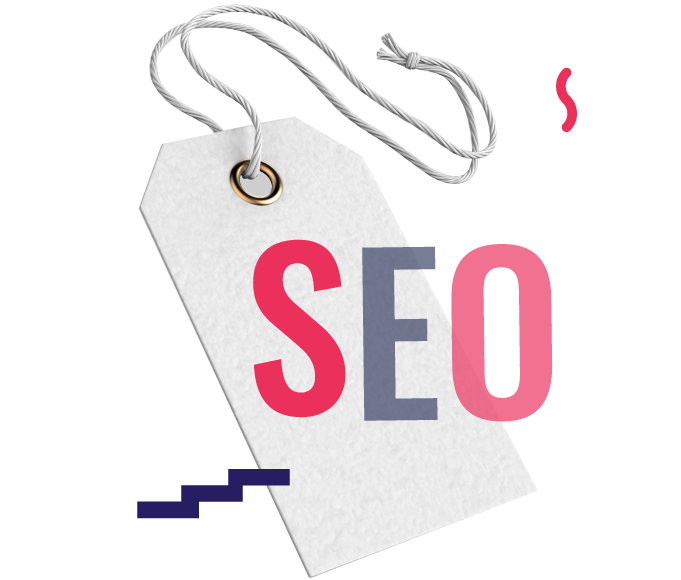

The quest to choose the perfect CMS for your business is a choice shaped by your unique goals and the products or services you offer. While there’s no right or wrong answer, the secret to success lies in selecting a CMS that harmonises seamlessly with your SEO strategy and overall business objectives.
If you’re an e-commerce site selling products, a platform like Shopify, Magenta or WordPress is a good option, as they have a good infrastructure that will allow you to easily recreate an ecom model site structure to allow the best functionality and SEO results. However, if you’re a SAAS business or sell high-end products/services, you might want a more sophisticated CMS that will allow you to create a range of different branches while staying in a single CRM, then Salesforce is a better option.
Small businesses might find Wix easier to use. While it’s harder for SEO, especially strategies with lengthy SEO campaigns, wix is beneficial for small businesses who want to focus on increasing their brand awareness and presence online.


On the flip side, if you’re a big ecomm brand with thousands of stores, you want a cms that will align with your goals and target market while helping to boost your SEO strategy and make implementation simple and quick. More often than not, the right cms for your brand will be decided by your target market, industry and website, as well as by understanding how much customisation the CMS offers for SEO.
If you want a custom cms (unlike Shopify, which is a ready-made solution), you’ll need to build from the ground up. This is often the best solution if your business requirements are complex, but it is important to remember that your unique website needs to meet the right customisation requirements and features to make your website SEO friendly. This includes features that allow SEO to change the site structure URL/slug or add on-page content to a landing page. This will mean in the future, any SEO implementation or work that needs to be done for your campaign can be done so easily and will generate the most growth and return on investment for your business.
Using SEO plugins


While some CMS platforms come equipped with built-in plugins, extensions, applications, or apps, SEO plugins offer an additional layer of software or code designed to enhance specific functionalities. Picture this: You can effortlessly incorporate chatbot features, eye-catching pop-up banners, or popular plugins like Yoast (primarily for WordPress) into your arsenal. These SEO plugins serve as invaluable support resources, providing crucial information and aiding your SEO efforts. However, it’s important to approach the information from these plugins with a discerning eye, using them as valuable insights rather than absolute gospel.
You also need to exercise caution when integrating plugins, as an excessive number can weigh down your website’s speed, particularly in the case of WordPress. Select only active and genuinely useful plugins, ensuring they contribute to your site’s functionality and speed while discarding any unnecessary drains on performance. Let your website soar with the optimal blend of carefully chosen plugins, propelling you towards SEO success with unrivalled efficiency and speed.


As you embark on the quest to enhance your website’s SEO prowess, always remember the crucial rule of thumb: choose plugins that seamlessly complement one another. Selecting incompatible plugins can lead to disastrous consequences, as they may disrupt the very functionality they were designed to provide, rendering them mere space-wasters in your CMS. Imagine the hassle of toggling plugins on and off at different times just to ensure their harmonious coexistence, resulting in precious time wasted.
Plugins can make life easier for those that don’t know much about SEO and give them a kickstart in the right direction thanks to their pre-configured or default modes. If you need more customisation from your SEO plugin, you need to understand in more detail how the software works. Some of the most popular cms systems like WordPress, Shopify or Magenta will have a plugin or extension for anything and everything, but it’s important to be careful with the plugins that you choose. Even if the plugin is an auction on your cms it doesn’t always mean that it’s trustworthy; you should always look at the reviews and opt away from free plugins. A trustworthy plugin, more often than not, will be one that you have to pay for. If there aren’t any good reviews or you don’t know anything about it, you should always choose to not add it to your cms as in worst case scenarios this plugin can become a gateway for hackers to access your website.
SEO forecasting


SEO forecasting allows the specialist to look at historical data in order to forecast or predict the amount of work needed to reach a certain SEO KPI or goal. For example, if your KPI is a 3 million increase in revenue in a year, the forecasting will tell you what investment is needed and the games in a 3, 6 and 12-month period based on historical forecasting. This data-driven approach enables you to make informed decisions and strategically plan your SEO activities, bringing you closer to achieving your business objectives.
When looking at SEO forecasting, you ideally need a minimum of 12 months’ worth of data to be able to forecast reliable future predictions in your traffic and revenue. There are a few ways to forecast; based on historical traffic, revenue and conversion, based on click-through per cent increase depending on your rankings (more complex to forecast), forecasting based on total traffic (not the best for new clients). If you have a new client who wants forecast data, the only option is to forecast their total outlet and, further down the line (6 months), see how much of an uplift has been identified in their non-brand before forecasting again from that.



The reason forecasting is important is that it gives clients an idea of how much money they need to put into the SEO investment to be able to reach the goals that they want. No one’s going to give you money if I don’t know what they’re gonna get in 12 months. As SEO is a long-form investment, forecasting is the best way to show their return by utilising metrics like traffic, revenue, conversion data, clicks, impressions and keyword rankings. All of these things can be forecasted together or separately for your clients.
There are two different types of forecasting methods which likely depend on the resources available to you. One is a simple method that doesn’t account for considerations like seasonality, change in marketing conditions, user behaviours etc. The other is a newer software that takes all external fluctuating factors into its forecast that could’ve previously impacted your initial forecast or restrict how much growth you’re looking for and provide more realistic data in your forecast. But at the end of the day, it’s a forecast, no matter what tools you use. Whether you complete this forecast manually also software, there are gonna be changes that you may not be able to account for or that may stop you from reaching the predicted forecasting goal, such as algorithm changes. Ultimately your forecast isn’t a KPI; it’s just an approximate number of where you think you’ll be based on the number of hours and investment your client wants to put in.
How to measure SEO ROI?


SEO ROI is a key calculation that gauges the return on investment from your search engine optimisation endeavours. By evaluating key factors like search engine rankings, organic website traffic, and goal completions, businesses can unravel their SEO ROI using a powerful formula: (Gain from Investment – Cost of Investment) / Cost of Investment.
While there is a general formula for calculating ROI, it’s essential to consider your industry’s unique dynamics, your website’s momentum, and the competition level you face. An immediate strong ROI may be rare for newcomers or those in niche sectors like SaaS or fiercely contested markets such as furniture. Instead of focusing on a single ROI figure, redirect your focus towards cultivating brand awareness and establishing a solid foundation to gradually build momentum. After all, winning at SEO is a momentum game that rewards patience and perseverance.
Measuring SEO ROI
When it comes to measuring and understanding ROI for your SEO campaign, three key steps need to be taken to ensure you’re making the best decisions for the success of your strategy.
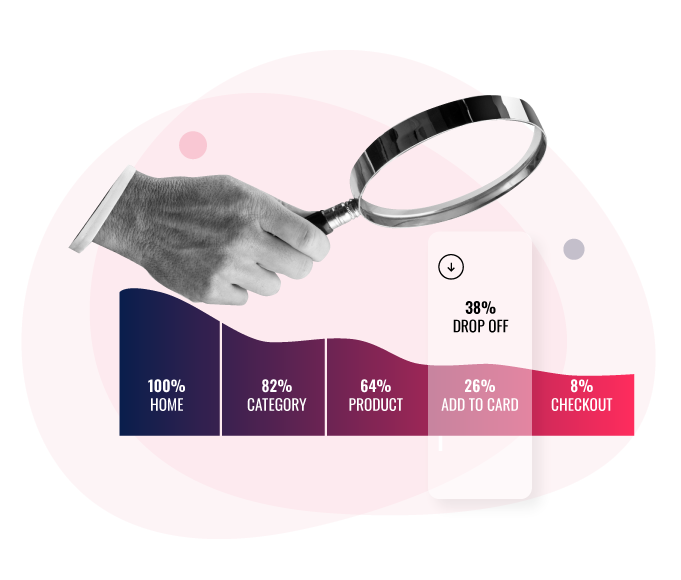

- Set crystal-clear goals: Kick off your SEO campaign by establishing clear, specific, measurable objectives. These can include boosting organic traffic, improving search engine rankings, or enhancing conversion rates. With well-defined targets, you’ll be better equipped to assess your progress and ROI.
- Monitor pertinent metrics: Identify crucial metrics to track and evaluate your SEO efforts. Key performance indicators (KPIs) include organic search traffic, click-through rates (CTR), and average time spent on a page. Harness tools like Google Analytics and Google Search Console to closely monitor these metrics and gain valuable insights.
- Crunch SEO ROI numbers: To calculate your SEO ROI, employ the formula: (Gain from Investment – Cost of Investment) / Cost of Investment. Don’t forget to consider both direct and indirect costs, such as content creation, technical optimisations, and outreach initiatives. You can fine-tune your strategies and maximise your ROI by comparing your SEO campaign’s results with your initial investment.
Stay persistent and keep refining your SEO tactics to see your ROI flourish over time.
Creating & submitting XML sitemaps
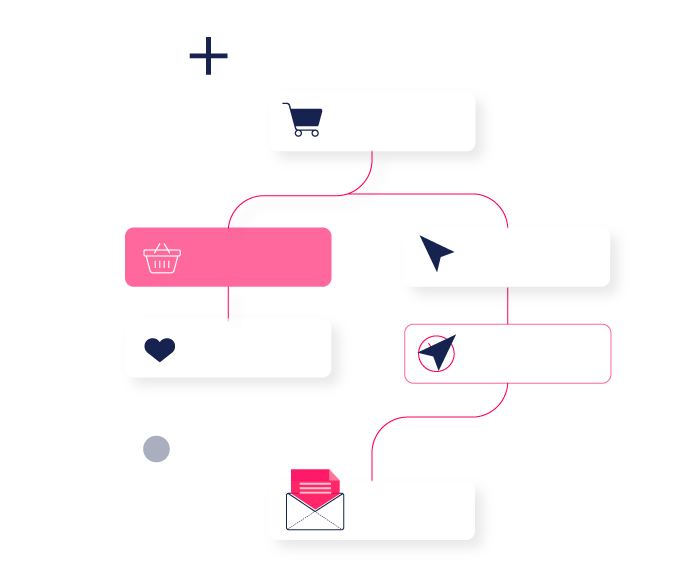

Creating and submitting an XML sitemap is fundamental to ensuring that search engines can efficiently crawl and index your website. Think of an XML sitemap as a well-crafted roadmap that guides search engines, like Google, through the intricate labyrinth of your website’s content. This helps search engines understand how your website is structured, broken down into different categories like products, collections, pages, blogs, and more. By offering crystal-clear directions to search engines, you can amplify their ability to explore and understand your website’s vast universe of information, giving them a clear direction on what to crawl and index on your site.
Typically, an XML sitemap can be accessed by adding “/sitemap.xml” to your domain name. However, the XML sitemap’s path will vary depending on the CMS platform you use. Using dynamic XML sitemaps is preferred because they are automatically updated when changes are made to your website. This ensures that your XML sitemap is always up-to-date, providing search engines with the most accurate information. On the other hand, if you choose to create a manual sitemap, you may find more time and dedication towards its creation and upkeep. Because manual XML sitemaps only show the date when the URL was first created and not any changes, you’ll need to create a new sitemap every time a change is made to keep your sitemap up to date.
Creating the XML Sitemap


XML sitemaps aren’t the only way for Google to crawl your website. In fact, we’ve seen websites with no sitemap still get crawled almost entirely by Google since it uses links as its primary method for discovering and indexing new pages. However, an XML sitemap is like a safety net that can be invaluable for SEOs, as it allows for easy diagnosis and troubleshooting of any issues that may arise.
When you create a site map – whether dynamic or static – it’s essential to upload it to Bing Webmaster Tools or Google Search Console. One common mistake is only adding the parent sitemap folder. Then, you should also include any sub-sitemaps. For example, Kogan has around 100 different sitemaps. If you add them separately in Google Search Console, you can diagnose various SEO issues separately instead of having everything lumped together in one unwieldy document. Think of it like a novel broken into chapters: it’s easier to navigate and understand when you can pick and choose which section to read rather than being overwhelmed by one long, continuous piece of text.
Creating & managing robots.txt files


Managing and creating a robot.txt file holds the key to instructing search engines precisely on which areas of your website they can explore and index. While also granting you the power to block specific pages from being indexed, safeguarding sensitive information from crawling search engines with utmost precision.
The robot.txt file can be hugely beneficial for your website. Its main advantage is that it can block search engineer from crawling and indexing dynamic landing pages. As a result, these low index pages that you potentially don’t want Google to index will be avoided, through a SEO concept called site bloating, so your site is protected from any negative impacts.
Additionally, if your robot.txt file is correctly linked with your XML sitemap, search engines can find and browse your website more easily, helping to boost its online visibility.



However, it’s important to be careful when using the robot.txt file. It’s a powerful tool, but it’s also very sensitive. Even a small mistake can have serious consequences, like Google potentially rejecting your site. Because of this, it’s often best to leave managing the robot.txt files to people who have the necessary expertise to use them properly.
This is why creating and managing a robot.txt file is essential to make your website as search-engine friendly as possible. If you use this tool in the right way, you have full control over which pages are crawled and indexed, all while keeping any sensitive information secure.
Google Webmaster guidelines


Within the realm of SEO, the Google Webmaster Guidelines stand as the epitome of best practices bestowed upon us by the search engine giant itself. These guidelines are a sacred code, carefully crafted to aid in your website’s seamless discovery, indexing, and ranking. However, it is paramount to heed these guidelines diligently, for any violations can lead to dire consequences.
Google Webmaster guidelines essentially act as the secret treasure map, leading the way to greater visibility on search engines. As the digital landscape constantly evolves, these guidelines are regularly refreshed to keep you ahead of the game and help you conquer search engine rankings.


The guidelines revolve around three key areas: crawling, indexing, and user experience.
- Crawling: Effective crawling involves providing clear pathways for search engine bots to navigate your site. Creating a well-structured website architecture, using XML sitemaps, and eliminating crawl errors are crucial for smooth crawling.
- Indexing: Improving indexing requires high-quality, unique content. Avoiding duplicate content, optimising meta tags, utilising descriptive URLs, and ensuring mobile-friendliness and fast loading times contribute to better indexing.
- User Experience: Providing a positive user experience is paramount. Easy navigation, fast loading times, engaging content, adherence to accessibility guidelines, mobile optimization, and minimal intrusive interstitials all contribute to an exceptional user experience.
Google Webmaster Guidelines are your ultimate weapon in the thrilling realm of SEO. They equip you with strategies to conquer the search engine battlefield, outshine competitors, and leave a lasting impression. Stay updated, unleash your website’s potential, and embark on an impressive journey to online triumph.
Bing Webmaster guidelines


Bing Webmaster Guidelines are a valuable resource designed to enhance your website’s visibility and performance on the Bing search engine. Just as Google has its own guidelines, Bing provides a comprehensive framework of best practices and recommendations for webmasters and SEO practitioners. By following these guidelines, you can best ensure your campaign’s success and improve your rankings.
Bing Webmaster Guidelines revolve around three key areas very much similar to Google’s webmaster guidelines which include: crawling, indexing, and user experience.


- Crawling: Effective crawling ensures search engine bots can navigate your website effortlessly. To facilitate this, create a well-structured website architecture, employ XML sitemaps, and eliminate crawl errors that could impede the crawling process.
- Indexing: Boosting indexing on Bing requires high-quality, unique content. Avoid duplicate content, optimise meta tags, utilise descriptive URLs, and prioritise mobile-friendliness and fast loading times to enhance indexing.
- User Experience: Providing an exceptional user experience is a crucial aspect of Bing’s guidelines. Focus on easy navigation, swift loading times, engaging content, adherence to accessibility guidelines, mobile optimization, and minimising intrusive interstitials to create a positive user experience.
Bing Webmaster Guidelines offer valuable insights and recommendations to help you enhance your website’s performance on the Bing search engine. By following these guidelines, you can optimise your website’s crawling, indexing, and user experience to meet Bing’s standards and improve your visibility in search results. Stay informed about the latest updates, and leverage these guidelines as your compass to achieve SEO success on Bing.
Understanding SEO Goals


To have a rock-solid SEO campaign, you need to know your goal. Unfortunately, far too many businesses launch into SEO without setting clear expectations or understanding what they want to achieve. But here’s the thing: SEO is about more than driving traffic and ranking high on search engines. If it doesn’t address your business problem or align with your goals, it won’t make you happy – no matter how good your SEO game is.
That’s why early communication is vital. You need to get to grips with your industry, figure out what KPIs you’re looking for, and establish what deliverables you expect from an SEO campaign. For instance, if you’re running an e-commerce site, revenue will naturally be a top priority, but what other factors might affect your success? In some cases, subscription-based goals might create more revenue in the long run, even if initially cheaper than outright product purchases.


The same goes for professional services. You need to question how you measure your success? Are you focused on driving subscriptions, or is there something else that matters more? In the world of SaaS, generating traffic and subscriptions is crucial, given that sales can take months to come through. But for plumbers and other service providers, it might be about the number of phone calls and emails you receive.
Ultimately, success comes down to alignment. You need to set goals that are properly aligned with your business’s measurement of success and fit into your overall strategy. By tracking your goals and monitoring your progress, you’ll be well on your way to an SEO campaign that takes your clients to the next level.
Understanding major Google algorithm updates


Google has been rolling out major algorithm updates for years, all with the same goal in mind: to ensure the quality of search results. These updates are designed to keep everyone on the same playing field, with websites that follow these newly outlined guides tending to rank higher in the eyes of Google. However, those trying to bypass the system or employ shady practices may see their rankings drop.
Some of the most significant updates include Panda, launched in 2011, which aimed to improve the quality of website content. This update penalised websites with duplicated, irrelevant, or shallow content and rewarded those with in-depth descriptions that were valuable to users.
Penguin, launched before 2020, targeted link-building and punished those using shady tactics to gain backlinks. Many websites lost a lot of traffic as a result of this hard-hitting update.
In 2013, Hummingbird focused on low-quality content and keyword stuffing, penalising websites that created content for the sake of it rather than for user value.
The Mobile update in 2015 addressed the increasing number of mobile users and how websites performed on mobile devices. Any site that wasn’t optimised for mobile saw a decrease in search engine value.



RankBrain, launched in 2015, looked at the relevance of content and user experience. Websites with engaging and in-depth content were rewarded, while those without were penalised.
The Medic update in 2018 targeted “Your Money Your Life” websites, especially those in the medical industry, where content quality is crucial. As a result, websites dealing with health-related issues were scrutinised more carefully, and low-quality content was penalised.
The BERT update, rolled out in 2019, aimed to improve Google’s understanding of natural language processing. This update focused on understanding the context of words in search queries and provided more relevant search results. This update was a significant step forward in Google’s efforts to provide users with the most accurate and useful results.
Since then, Google has been rolling out core updates every few months, encapsulating everything from the quality of links to ensuring that no dodgy practices are being used. By adapting to these updates, websites can surpass competitors, driving more traffic and sales than ever after these updates have been rolled out.
Search engines support SEO industry


There’s a common misconception that SEO professionals and search engines are at odds with one another. But in reality, Google is incredibly supportive of the SEO industry. That’s why they have Google Webmaster Tools and an entire forum dedicated to SEO, where professionals can ask questions and get answers from Google staff.
In fact, modern white hat SEO is crucial to Google’s success. By keeping tabs on bad links and prioritising high-quality content, SEO professionals help Google provide better search results to users. They also work to fix technical issues like slow site speeds, ultimately saving Google resources.
Despite what some people may think, Google isn’t trying to promote ads above all else. Users come to Google for information, not just advertisements. In short, SEO and search engines go hand in hand, working together to achieve great things.
Tools needed for a successful SEO campaign


Embarking on a successful SEO campaign requires a robust toolkit tailored to your industry’s unique needs. Although there’s an infinite number of tools available, you don’t need to use them all. Instead, the key is identifying the top tools that should always be part of your SEO arsenal.
Some essential tools for an effective SEO campaign include:
- Google Search Console: Google’s free service helps monitor, maintain, and troubleshoot your website’s presence in search results, providing invaluable insights for optimisation.
- Ahrefs/SEMrush: Comprehensive SEO platforms providing in-depth keyword research, backlink analysis, and competitor insights for strategic optimisation.
- Screaming Frog: A versatile website crawler that quickly identifies technical issues, analyses on-page SEO factors, and aids in site audits.
- Google Analytics: A powerful analytics tool that tracks website performance, user behaviour, and traffic data to inform data-driven SEO strategies.
- Google Sheets/Docs: Collaborative cloud-based applications for efficient organisation, data analysis, and content creation, streamlining the SEO campaign workflow.
At the end of the day, the tools you choose will depend on the industries you’re working with. So always invest in high-quality tools to help you drive the most impactful SEO results.
Summary


By the end of this first chapter, we hope you’ve been equipped with the tools and knowledge to excel in SEO. With these basic skills, you should be ready to conquer the digital realm and achieve exceptional results. Implementing your newfound knowledge to witness the transformative power of effective search engine optimization.
If you’re ready to dive headfirst into the ocean of SEO, now is the perfect time! With this new knowledge fresh in your mind, head to chapter two to learn more about search engines and their role as gatekeepers to SEO success.
In this next chapter, we’ll uncover the intricate mechanisms that power search engines – from understanding the fundamental purpose of search engines to exploring the fascinating world of search engine crawling and indexing. We’ll also unravel the mysteries behind Google Core Algorithm updates and how they impact your website’s visibility. Delve into the key factors that influence Google rankings and grasp the significance of crawl budget management. So whether you’re intrigued by the technical aspects of rendering and processing or eager to unravel the secrets of page ranking, chapter two will cover everything you’ll want to know.

